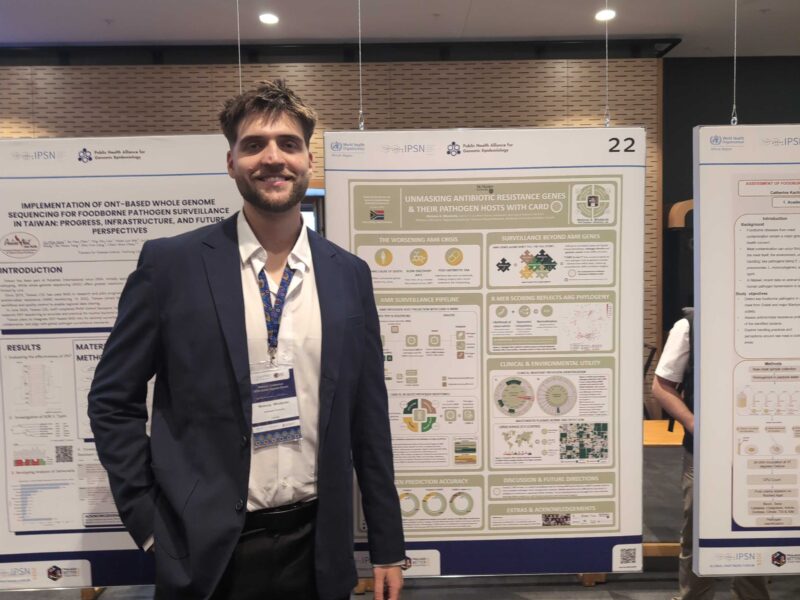 Rooney et al. 2022 Jun 1;e0002222.
Rooney et al. 2022 Jun 1;e0002222.
Short-read sequencing can provide detection of multiple genomic determinants of antimicrobial resistance from single bacterial genomes and metagenomic samples. Despite its increasing application in human, animal, and environmental microbiology, including human clinical trials, the performance of short-read Illumina sequencing for antimicrobial resistance gene (ARG) detection, including resistance-conferring single nucleotide polymorphisms (SNPs), has not been systematically characterized. Using paired-end 2 × 150 bp (base pair) Illumina sequencing and an assembly-based method for ARG prediction, we determined sensitivity, positive predictive value (PPV), and sequencing depths required for ARG detection in an Escherichia coli isolate of sequence type (ST) 38 spiked into a synthetic microbial community at varying abundances. Approximately 300,000 reads or 15× genome coverage was sufficient to detect ARGs in E. coli ST38, with comparable sensitivity and PPV to ~100× genome coverage. Using metagenome assembly of mixed microbial communities, ARG detection at E. coli relative abundances of 1% would require assembly of approximately 30 million reads to achieve 15× target coverage. The minimum sequencing depths were validated using public data sets of 948 E. coli genomes and 10 metagenomic rectal swab samples. A read-based approach using k-mer alignment (KMA) for ARG prediction did not substantially improve minimum sequencing depths for ARG detection compared to assembly of the E. coli ST38 genome or the combined metagenomic samples. Analysis of sequencing depths from recent studies assessing ARG content in metagenomic samples demonstrated that sequencing depths had a median estimated detection frequency of 84% (interquartile range: 30%-92%) for a relative abundance of 1%. IMPORTANCE Systematically determining Illumina sequencing performance characteristics for detection of ARGs in metagenomic samples is essential to inform study design and appraisal of human, animal, and environmental metagenomic antimicrobial resistance studies. In this study, we quantified the performance characteristics of ARG detection in E. coli genomes and metagenomes and established a benchmark of ~15× coverage for ARG detection for E. coli in metagenomes. We demonstrate that for low relative abundances, sequencing depths of ~30 million reads or more may be required for adequate sensitivity for many applications.

